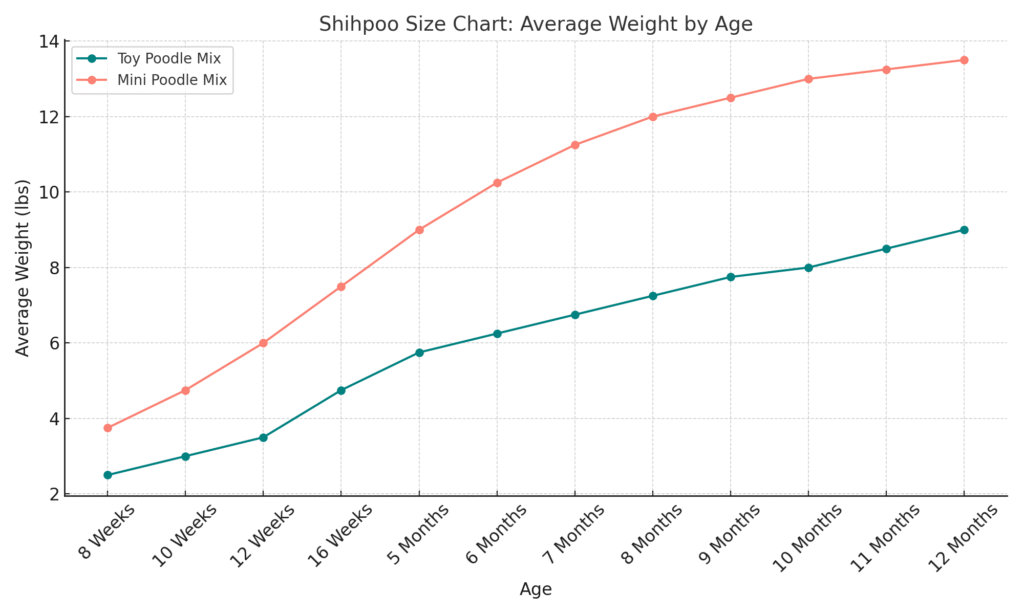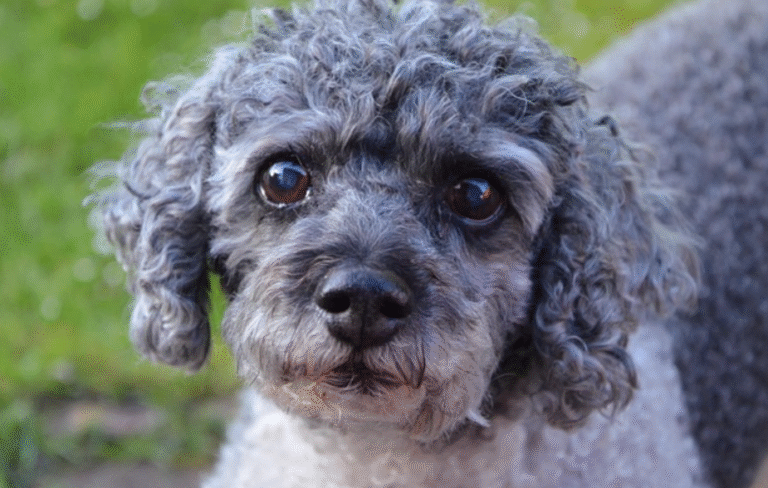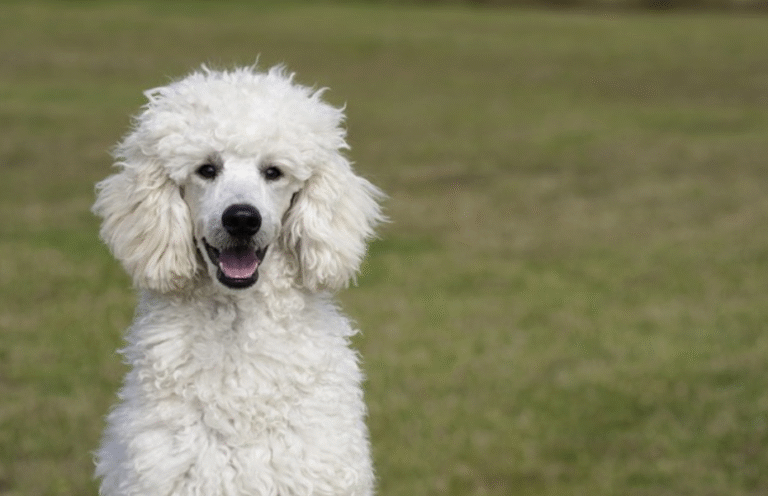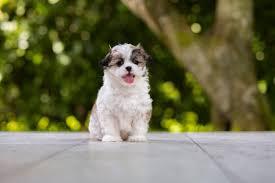A shih-poo, is a tiny mixed breed dog that has shih tzu and poodle parentage. Famous for their silky coat, button face and fun-loving disposition, shih-poos adapt easily to most households.
Most shih-poos are 20 – 38 cm tall and weigh between 4 – 8 kg. A lot of pet owners opt for this breed due to its calm disposition and non-shedding coat.
The following passages demonstrate what to know prior to bringing one home.
The Shih-Poo Profile
Oftentimes called a designer dog, the Shih-Poo mix breeds the lovingly loyal Shih Tzu and the smart Poodle. This mix distinguishes itself by its affectionate personality, diminutive size, and hypoallergenic coat, which has earned it a place in the hearts of urbanites and households everywhere.
Its versatility makes it equally at home in an apartment, while the breed’s low-shedding coat is a boon to allergy sufferers.
1. Origins
The Shih-Poo’s origin is American, with the initial deliberate hybrids occurring during the late 1900s. Breeders desired a dog that would mix the loyal, charming personality of the Shih Tzu with the intelligence and hypoallergenic coat of the Poodle.
This was the era of “designer breeding,” crossing two purebreds for specific traits. Though not recognized by major kennel clubs, the Shih-Poo is accepted by multiple designer breed registries.
The primary motivation for breeding Shih-Poos was companionship, rather than show or working ability, and they have become extremely popular among singles, couples and families alike.
2. Appearance
That’s because most Shih-Poos are petite, weighing in at adult weights of 8-18 pounds (3.6–8.2 kg) and standing 20–33 cm tall. The precise size fluctuates, depending on if the Poodle parent was a toy or miniature.
Their bodies are small, frequently with strong legs and a curled tail. Coat is perhaps the most varied characteristic. Shih-Poos could be curly, wavy or silky and it can be straight or in the middle.
Coat colors are all over the place—white, black, brown, tan or combinations such as black and white or brown and cream are very typical. Big, round eyes and a short, soft muzzle provides most Shih-Poos with a tender, adorable expression.
3. Lifespan
Shih-Poos typically live for 10 – 18 years, a span influenced by their genetics, diet and care. Just as a proper diet, daily walks and grooming contribute to their well-being and may help them live a longer, healthier life.
Regular vet check-ups assist in identifying and mitigating typical health concerns early, like dental disease or ear infections—both more prevalent in this breed. Preventative care is crucial, as is proper hygiene, particularly when it comes to the ears and teeth, to combat these genetic issues.
4. Cost
A Shih-Poo from a good breeder will typically set you back between $1,000 and $3,000. Food, grooming (usually every 6-8 weeks) and vet bills pile on each year.
Owners need to allocate money for quality food, insurance and puppy basics classes. Crates, beds, toys, they all begin costing you before the pup ever comes home.
Puppy Growth

Shih-Poo puppies, a popular mix breed of the shih tzu poodle mix, pass through a few important stages of development at their own speed. From weeks old to full size, these dogs display obvious indications of body and mental development. Keeping tabs on these changes not only assists in identifying problems early but also directs pet parents through the roller coaster of raising a small dog.
Milestones
During their initial weeks, puppies depend on their mom for heat and nutrition. By around three weeks, their eyes open and they begin to move around more. Weaning begins at four to six weeks, marking the transition from mom’s milk to soft foods for your new furry friend. First vaccinations are key during this period; most puppies receive their initial vaccinations around six to eight weeks of age, safeguarding them from typical ailments.
The latter stage focuses on social development, especially for a shih poo dog. Shih-Poos require soft exposure to humans and other pets as soon as eight weeks. Getting them out and about when they’re young to safe new locations, noises, and people makes them more confident. Absent this, puppies can develop into shy adult dogs.
The latter stage focuses on social development. Shih-Poos require soft exposure to humans and other pets, as soon as eight weeks. Getting them out and about when they’re young to safe new locations, noises and people makes them more confident.
Acknowledging tiny victories, like when your shih poo dog finally goes in the right spot for potty, creates trust and a bond. This early training is essential for shaping an ideal dog that grows into a loving companion.
Incorporating quality dog food and frequent vet visits during this time can also ensure the health of your puppy. With proper care and attention, your shih poo can develop into an affectionate breed, ready to bring joy to your family.
Growth Chart
- Their growth rate is dependent on genetics, diet and even how much exercise a puppy gets.
- At 8 weeks: Most Shih-Poo puppies weigh 1.5 to 3 kg.
- At 4 months: Weight usually ranges from 2.5 to 5 kg.
- At 1 year: Adult Shih-Poos reach 4 to 8 kg and stand 20 to 38 cm at the shoulder.
- Certain puppies will grow slower or faster than these averages.
Weighing and measuring a shih poo dog every week or so can catch problems early. If a puppy strays outside these ranges or appears to taper off abruptly, a visit to the veterinarian is prudent for ensuring the health of your furry friend.
Monitoring Development
Puppy growth is about more than just size. Expect good appetite, mischievous energy and consistent learning. A pup that refuses food, appears lethargic constantly or shuns interaction needs to be addressed.
A consistent schedule at home aids. Attempt to feed, walk and train at the same times each day. This boosts confidence and keeps both body and mind in tune.
Growth is never even. Spurts and slowdowns are natural. What counts is a constant forward course, supported by loving adults.
Temperament Unpacked

Shih-Poos, a popular mix breed, are some of the sweetest dogs you’ll ever find, combining the loving temperament of both their Shih Tzu and Poodle parents. This affectionate breed is very compatible with many homes and lifestyles, providing flexibility that resonates with a lot of families.
Personality
Shih-Poos have a faithful and affectionate disposition. They cling tightly to their packs and typically desire to be near them as frequently as they can. Their dedication translates to them loving cuddle time and will often find a lap to fall asleep on.
Their whimsical nature pops, with playful sprees followed by naps. Others admit a streak of mischievousness — sneaking off with socks or toys — which injects a bit of appeal. They’re friendly with other pets – including dogs and cats – so they fit in well in multi-pet homes.
While Shih-Poos flourish in social spaces, they can become bored or anxious if left alone for too long.
Socialization
Early socialization is key for Shih-Poo puppies. Introducing them to new people, new places and socializing with other dogs in a secure environment will help them develop into confident, social dogs.
Puppy classes come in handy when you need to improve social skills and they teach him how to be a good dog. These classes help dissipate nervousness, particularly in unfamiliar or hectic environments.
Shih-Poos, with their trusting and friendly disposition, generally thrive in these packs and are quick to be social. Good socialization early brings you a dog that breezes through new experiences.
Family Fit
Shih-Poos are described as excellent nannies. Their sweet disposition and desire to lurk closely to people make them excellent for families with children. Toddlers typically have a ‘play pal winner’ in a Shih-Poo, and the breed’s medium-high energy provides them with the ability to get involved in play, but to relax when it’s time.
They take to flats and houses equally well. Small city flat or large estate, Shih-Poos are happy as long as they’re with their family.
Be sure to consider their grooming and energy requirements prior to welcoming one into your home. Shih-Poos require frequent brushing, and as much as they embrace playtime, they require periods of downtime to prevent feeling overwhelmed.
Intelligence and Trainability
Shih-Poos are brilliant, due to their Poodle parentage. They catch on to new cues quick and can memorize all sorts of tricks or commands. Still, the Shih Tzu parent can make them a bit headstrong, so patience is a virtue.
Shih-Poos thrive on brief bursts of goodness. Compliments, snacks, and soft words keep them on track and hungry to discover. This breed does much better with rewards than severity.
Daily Care

Shih-Poos require regular maintenance to remain healthy and happy. Their hybrid background combines qualities from both the Shih Tzu and Poodle, which means their schedules need to be established and defined. Daily focus on grooming, feeding, exercise and health checks can stave off problems, and just generally support their well-being.
Below is a table of daily care routines and their benefits:
| Routine | Frequency | Benefit |
|---|---|---|
| Brushing Fur | Daily | Prevents matting, keeps coat clean |
| Face Washing | Daily | Reduces tear stains, hygiene |
| Tooth Brushing | 3+ times a week | Prevents gum disease |
| Feeding | 2–4 times daily | Supports energy, prevents low blood sugar |
| Exercise | 30 minutes daily | Maintains weight, reduces boredom |
Nutrition
Proper nutrition is essential for Shih-Poos. It aids treat-training, develops pet-owner trust and rewards positive behavior. Additionally, it assists in calorie limitation, which is critical for weight-prone small breeds.
Be sure to count treats in your daily food total as well, so you don’t overfeed. For optimal results, consult a vet for a diet schedule that aligns with your Shih-Poo’s age and health.
Grooming
Grooming is a vital aspect of Shih-Poo care. Brush out the fur daily to deter matting, clean the face every day to avoid discoloration, and cut nails every 2-4 weeks. Most Shih-Poos require grooming every 4 – 6 weeks.
This grooming keeps their coat trimmed, ears free from dirt, and their nails short. Most owners have a groomer do a nice trim and bath, which tamps down the thick or curly coat. Brush teeth a minimum of 3 times a week.
Although nail trimming (which can be done at home or by a groomer) must not be neglected. Establish a regular grooming schedule. Set reminders for brushing, teeth cleaning, and nail trims to keep your Shih-Poo clean and healthy.
Exercise
Daily exercise is a requirement for Shih-Poos, but they have modest needs. Just 30 minutes of walking, frolicking in the yard, or puzzle toys will keep them trim and prevent boredom. Shih-Poos are intelligent and love to be taught tricks or to play fetch.
Their energy is moderate, so they require both active periods and rest. Don’t push long runs or hard exercise. Instead, opt for short walks, indoor games, and toys for mental work. This not only prevents weight gain but also keeps their mind occupied.
Veterinary Care
Regular vet visits are important for Shih-Poos. These visits detect issues early, assist with immunizations, and reinforce dental cleanings. Puppies visit the vet most frequently during their first year, while adults should go at least once a year.
Vets can advise on feeding, grooming, and exercise requirements as the pup matures. Regular check-ups ensure your Shih-Poo remains healthy and happy throughout their life.
Training Insights

Early training molds a Shih-Poo’s nature and establishes firm boundaries at home. This breed learns routines quickly, so those initial months are extremely important. When the training begins when they’re still pups, it’s a lot easier to instill good behavior—like not to jump on visitors or to nip during wrestling.
For instance, if you concentrate on leash walking or gentle play from the beginning, you establish a pattern that endures. Waiting until the dog is older just causes more push back and harder work down the road.
Positive reinforcement is hands down one of the best methods for training a Shih-Poo. These pups enjoy attention and tiny snacks, and will do things again that earn them rewards. Provide simple, brief commands and reinforce with a quick reward or happy-sounding voice when they obey.
For instance, say ‘sit’ and after the pooch sits, reward with some kibble or a soft pat. Resist the temptation to yell or punish, which only results in fear or obstinacy. Shih-Poos respond best when they feel secure and know what earns your approval.
Consistency is key. Training should be brief — 5–10 minutes, a few times each day. Choose consistent words and hand signs for each command so the pup doesn’t get confused. If you permit jumping some days but not others, your dog will have no idea what you’re after.
Adhere to your policies even if you’re making glacial progress. Trust me, I’ve trained a few and each Shih-Poo is unique; some pick up on things quicker than others, so patience is key. If the dog fumbles a new trick, keep cool and try again later.
Socialization is another piece to attack early. Introducing new friends, animals, and environments to a Shih-Poo keeps them calm and courteous beyond your own front door. Walks in crowded parks, trips to pet stores, or secure playdates with other dogs provide numerous opportunities for positive exposure.
Obedience classes provide group training and assist with commands such as sit, stay, or come even amidst distraction. Classes benefit owners in that they receive feedback from trainers and get to meet others who are working on the same things. These group environments encourage continuous education and keep both pet and owner inspired.
The Hybrid Reality
The Shih-Poo, or Shih Tzu Poodle mix, is one of the notable hybrids that showcases a cross mix of traits from both parent breeds. This lovable dog breed frequently accentuates the best qualities of both sides. Shih Poos can be playful and social like Poodles while also being loving but independent like Shih Tzus.
They’re small in size, typically 3-8 kgs, therefore suitable for small homes as well as larger residences. No two Shih-Poos are alike. Some can have curly coats like Poodles, others might be straight or wavy a little more like a Shih Tzu. Their coats may be a variety of colors and patterns including black and white, apricot or brown.
Grooming requirements can fluctuate significantly among Shih Poos. Some may require daily brushing and regular trims if their coat leans more towards the Poodle side, while others with straighter coats might need less maintenance. Understanding their grooming needs is essential for any future owner.
Hybrid breeds like the Shih-Poo tend to exhibit what is known as “hybrid vigor.” This means they can be less prone to inherited medical issues that often affect purebred dogs. However, Shih-Poos are not entirely risk-free. Health problems such as Von Willebrand disease, Legg-Calve-Perthes, and epilepsy may still arise.
Thus, it is vital to request health checks and family history from reputable breeders before adopting a Shih Poo dog. Responsible breeding truly matters for the long-term health and happiness of these furry friends.
Training a Shih-Poo can be a mixed experience. Some are fast learners and eager to please due to their Poodle lineage, while others may exhibit stubbornness, a characteristic from their Shih Tzu parent. Early socialization and consistent, light training are the most effective approaches.
Providing them with a schedule helps them feel secure and can prevent them from becoming distressed or needy when you’re away. Most Shih-Poos are sweet-natured and adore human companionship. They can accommodate a lot of lifestyles, from singles to families.
The Shih-Poo’s longevity, usually between 10 to 17 years, ensures they can be a forever friend. Their variety of appearances and personalities attracts those seeking a unique companion. As a popular mix breed, Shih-Poos exemplify how breed mixing can unite positive characteristics.
Maintaining their vigor and disposition comes down to ensuring breeders behave responsibly and intelligently.
📏 Shih-Poo Size Chart: Weight by Age
| Age | Average Weight (Toy Poodle Mix) | Average Weight (Mini Poodle Mix) |
|---|---|---|
| 8 Weeks | 2 – 3 lbs | 3 – 4.5 lbs |
| 10 Weeks | 2.5 – 3.5 lbs | 4 – 5.5 lbs |
| 12 Weeks | 3 – 4 lbs | 5 – 7 lbs |
| 16 Weeks | 4 – 5.5 lbs | 6 – 9 lbs |
| 5 Months | 5 – 6.5 lbs | 7.5 – 10.5 lbs |
| 6 Months | 5.5 – 7 lbs | 8.5 – 12 lbs |
| 7 Months | 6 – 7.5 lbs | 9.5 – 13 lbs |
| 8 Months | 6.5 – 8 lbs | 10 – 14 lbs |
| 9 Months | 7 – 8.5 lbs | 10.5 – 14.5 lbs |
| 10 Months | 7 – 9 lbs | 11 – 15 lbs |
| 11 Months | 7.5 – 9.5 lbs | 11 – 15.5 lbs |
| 12 Months (Adult) | 8 – 10 lbs | 11 – 16 lbs |
🔍 Notes Based on the 1,600+ Data Points:
- Toy Poodle Mixes tend to weigh 8–10 lbs fully grown.
- Miniature Poodle Mixes can reach 11–16 lbs as adults.
- 75% of Shihpoos plateau in weight by 10–11 months, with minimal gain after that.
- Height range (adult): 8 – 15 inches at the shoulder.
📊 Growth Curve Summary (Based on Data):
- 0–4 months: Rapid growth (around 60% of adult weight).
- 4–8 months: Moderate growth.
- 9–12 months: Slows down significantly.
- Full growth is often reached by 12 months, though filling out continues until 14–16 months in some cases.

Conclusion
Shih-Poos pack a lot of charm in one little body. A lot of people love them for their cute faces and amicable nature. They thrive in apartments or ‘McMansions’, and don’t require a large yard for amusement. Brushing keeps their coats soft, and long walks burn off steam. As these pups are eager to learn, short, enjoyable lessons work best.
Given proper attention, most shih-poos become good-natured, balanced companions. Not all mixes look or behave alike, however, so each one pops in its way. Eager to find out more or ready to adopt a Shih-Poo? Consult reliable sources or contact your local chapter for candid advice and encouragement.
Frequently Asked Questions
What is a Shih-Poo?
A Shih-Poo, a popular mix breed, is a hybrid dog resulting from the cross between a Shih Tzu and a Poodle, known for being tiny, affectionate, and infamously playful.
How big does a Shih-Poo get?
Most Shih Poo dogs stand 20 to 38 centimeters high and weigh 4 to 8 kilograms, showcasing the diverse characteristics of this popular mix breed.
Are Shih-Poos good for families?
Indeed, Shih-Poos, a popular mix breed, tend to be loving and sweet, making them a terrific family pet with both kids and adults.
How often should I groom my Shih-Poo?
Shih-Poos, a popular mix breed, require brushing a minimum of two to three times per week to avoid mats and maintain their coat type in tip-top shape.
Are Shih-Poos easy to train?
Shih-Poos, a popular mix breed, are smart and respond well to consistent, patient training methods.
Do Shih-Poos need a lot of exercise?
They require mild daily exercise — a few walks and play periods. 30-45 minutes a day is sufficient for most Shih-Poos.
What health issues are common in Shih-Poos?
Shih-Poos, a popular mix breed, might encounter ear infections, dental issues, and allergies; routine vet visits help manage these common shih poo health problems.






